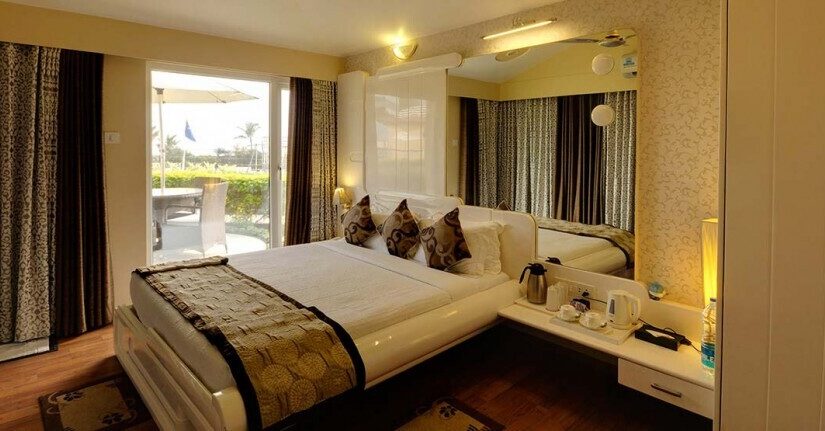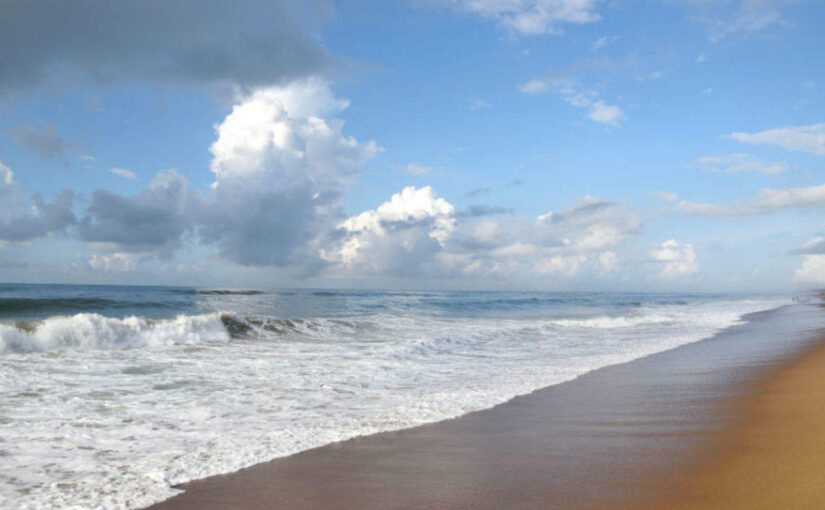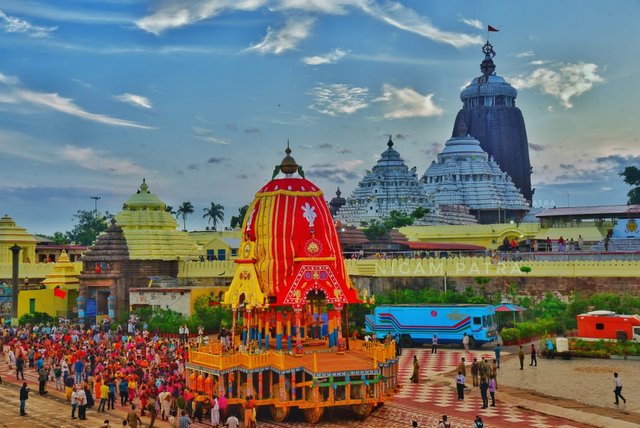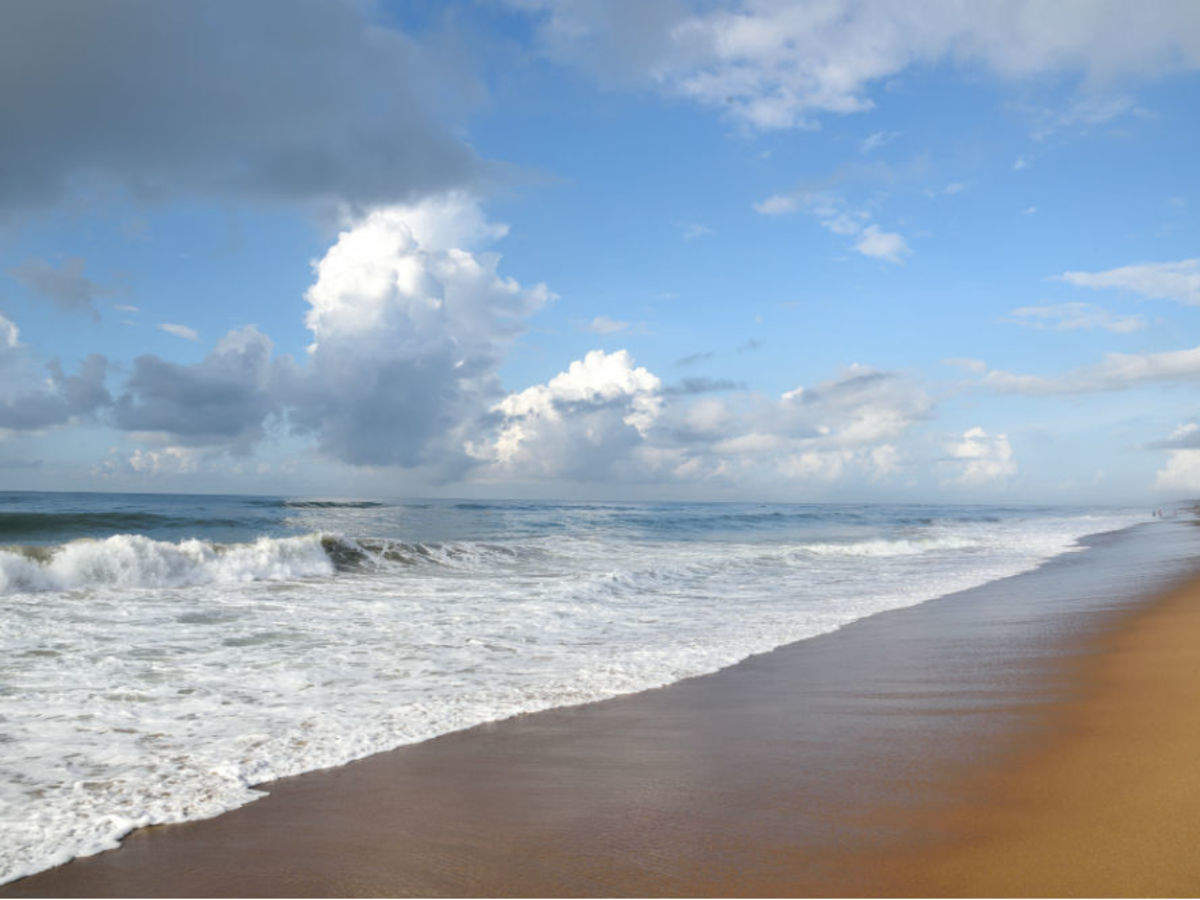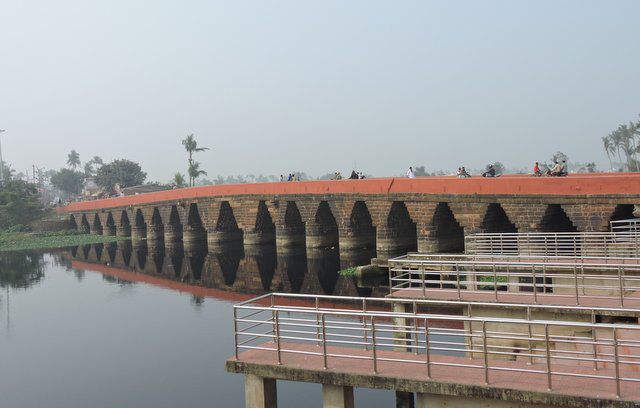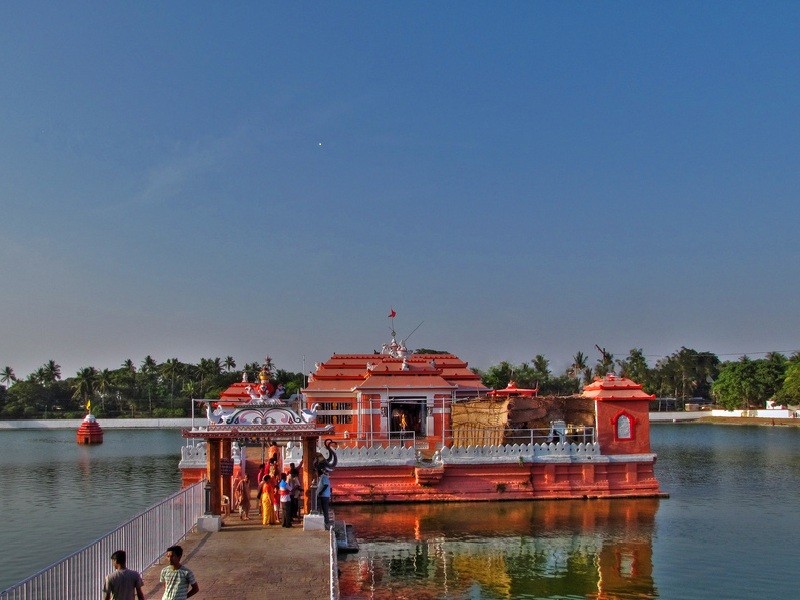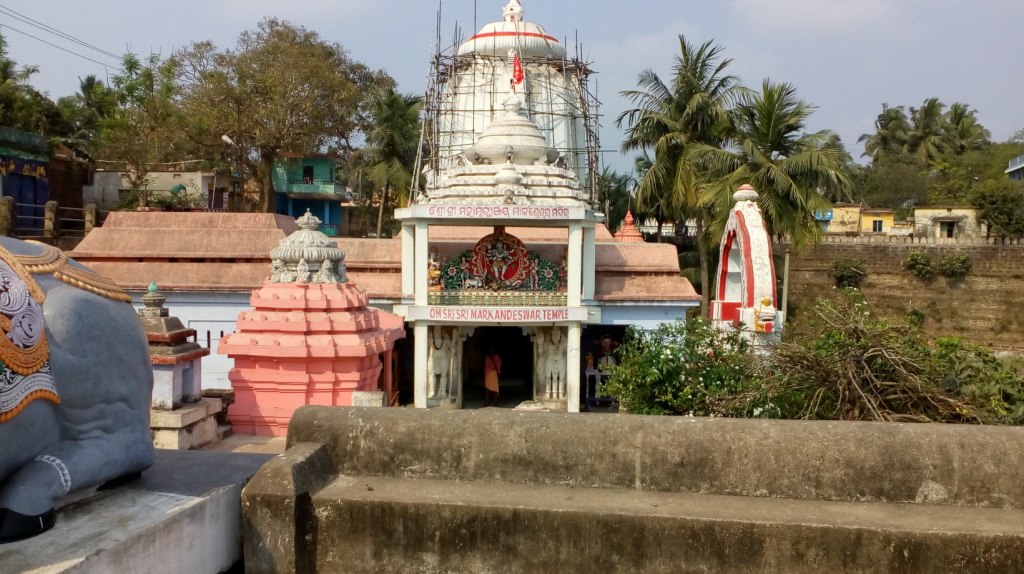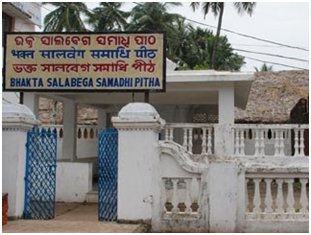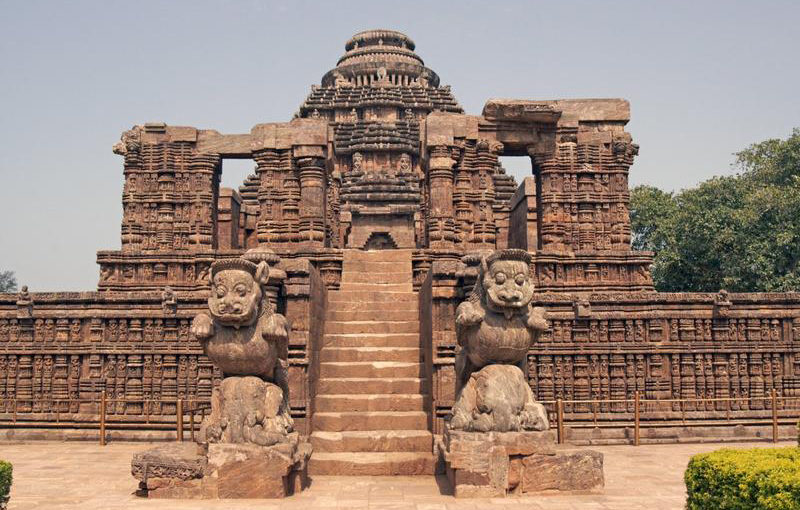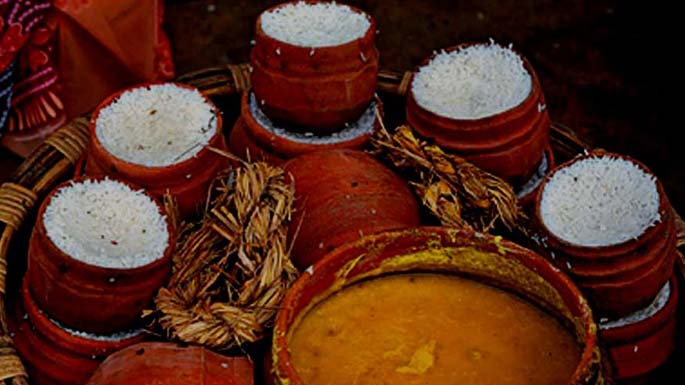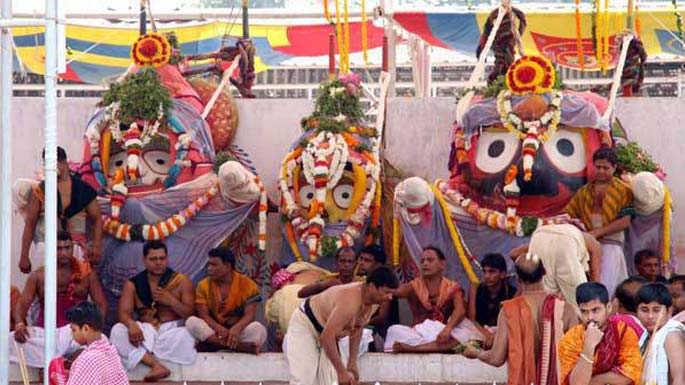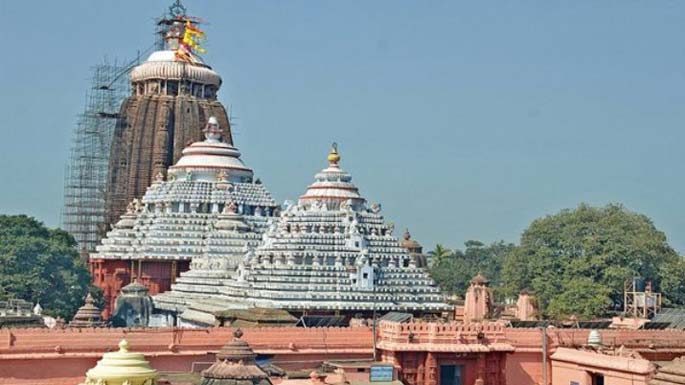They say that a poet or a writer has the ability to smith the words for feelings that arise on witnessing something extraordinary and when the great Rabindranath Tagore said
“Here the language of stone surpasses the language of human.”
to describe the beauty and marvel of Konark Temple, he very accurately and exactly elucidated the feelings of the viewers who find it difficult to pour appreciation for this structural marvel for they are not just amused but also are at loss of words.
Konark undeniably narrates the story its brilliant and highly skilled architects through the elaborative stone carvings. Believed to be built in 1255 CE by Narasimhadeva 1 of Eastern Ganga Dynasty, on the banks of vanished Chandrabhaga river, this allure made out of Khondalite Rocks is a UNESCO World Heritage Site with listing under Seven Wonders Of India multiple times.
Konark- Demystifying the Name
Konark holds its etymology in the combination of two Sanskrit words- KONA, which means corner and ARK, which means Surya, the Sun God. Thus the name signifies that the temple is dedicated to Sun God.
Konark is also known as Ark Khetra, again a name depicting a bond with Surya.
Another name for Konark is Black Pagoda. The name was given by Portuguese because the temple is made out of black stones. On the contrary, the Jagannath Temple is known as White Pagoda. Both these structures were used as landmarks by the sailors.
The Architectural Marvel
Though many would assume that just like other temples in Puri, Konark is also famous because of being a religious place. However, it is not. Prayers and worshipping is prohibited in the sanctum and more than being a temple dedicated to Surya, it is the nonpareil architecture, beautiful carvings and engravings on the stones that make Konark artistry grandeur, reflecting charm and grace even after being half deteriorated and in ruins and thus a must visit spot when you are there in Puri.

Konark Sun Temple
The sculptural work adorning the site, roaring of the sea waves at the adjacent Chandrabhaga Beach, the lush greenery spread around and cool sea breeze, come together to enhance the splendour of Konark, leaving the onlookers mesmerized.
Even after being so majestic and palatial, there is not just even a small or mole space that remains untouched of the any engraving or the carvings.
The Figures, Engravings & Carvings and Structure of Konark
Chariot Formation
Surya or Sun God in Hindu mythology owns a chariot, which is driven by Aruna. And accordingly the structure of Konark is designed. The whole formation is thus in a form of a chariot- with 12 pairs of intricately carved wheels and pulled by set of 7 horses. Following the principle and traditional Kalinga architecture format, it is carefully oriented in a manner that the first rays of the sun strike the principal entrance.
Structures
The main sanctum, which is the Vimana, of the temple fell, and now, one can see only few of its parts remaining. The second is the audience hall or Jagamohana that can be spotted right before the vimana. Nata Mandir, and Bhog Mandapa are structures completing the present day Konark.

Nata Mandir and Konark in the Background
There are rubbles of temples at the back of the main structure, believed to be of one of the wives of Surya- Mayadevi.
Important Images and Sculptures
The three giant figures of Surya are significant images among so many intricate and erotic carvings and engravings that depict various day to day routine activities, the lifestyles and the beliefs of the then era. These three figures symbolise the origin of Surya as-
- Pravhata Surya– Morning Sun identified as Creator Brahma
- Madhyanha Surya– Mid day Sun identified as Destroyer Shiva
- Astachala Surya– Evening Sun identified as preserver Vishnu
Apart from these three giant figures, the elephant, horse and man sculpture at the entrance are relevant constructions.
Sun Dial

The wheels of the chariots are also an important structure as they function as Sun Dials and are capable of judging the right time depending upon the positipn of the sun.
The Folklores
There are many accounts and tales related to Konark. The local legends have been popularised by the guides and the localities and thus are quite known.
One of the local saga states that worshipping at the temple is prohibited because the site is cursed. It is said that for its development, the king put a constrain that the workforce has to be 1200 artisans only and the time period for its completion has to be 12 years only- nor a person more or less neither a day more or less. The hardworking and talented artisans appointed for building almost finished all the work in the given time frame, but the only thing that remained was to find a way of placing the crown stone on its place permanently, for which king gave extra 3 days. But the work was to be finished otherwise all artisans will have to face death penalty. At this time, Dharmapada, son of the chief architect Bisu Maharana came to meet his father and came to know about the issue. He then proposed a way out and placed a strong magnetic rod on the top that would hold the complete structure as well as the crown stone. Though the matter was solved, the artisans were now in fear that if the king would come to know that a 12 year old boy achieved what his best artisans could not, he would be incensed and may pass another death penalty, and thus wanted to kill Dhramapada so that king would not come to know about their failure and his achievement. On learning this Dharmapada himself jumped into Chandrabhaga River and sacrificed his life to save another 1200. And thus the temple became impure, even though the king and artisans were regretful.
The magnet that was placed on the dome was removed during Indian Colonization era as it affected the navigation compass o the sailors, thus the main sanctum or the Vimana collapsed.
Know Puri and its nearby places better with us- Hotel Holiday Resort

